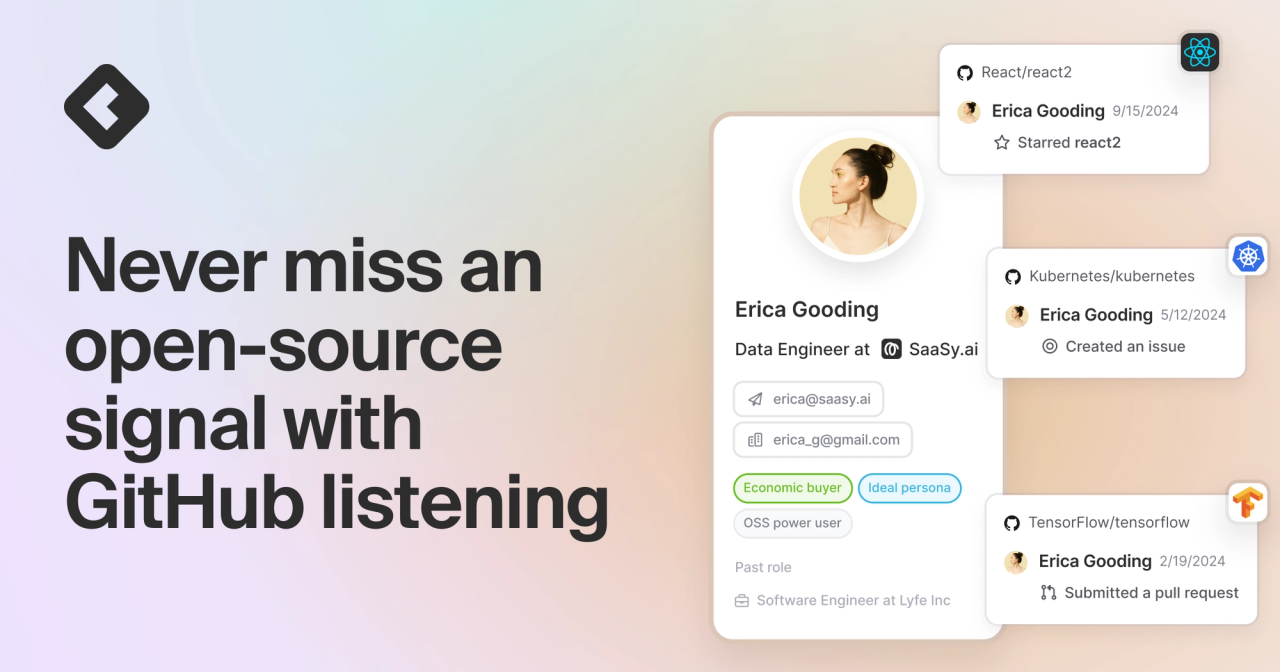- Go beyond your own GitHub repository with self-serve GitHub listening. Auto-capture signals from any public repo to inform go-to-market strategy.
- Track GitHub activity like pull requests, commits, forks, discussions, issues, stars, and other signals.
- See the person and account behind the signal—and connect open-source activity to engagements across other channels—using Common Room’s AI-powered identity resolution and waterfall enrichment.
We’re lucky to work with a who’s who of commercial open-source software companies at Common Room.
Apollo GraphQL and Docker. Pulumi and Pinecone. Temporal and Vercel. The list goes on.
Open-source software is a superpower for each and every one of them. It’s how they build brand awareness, prove the value of their technology to developers, and cultivate product champions.
But visibility into open-source ecosystems is low.
Unlike traditional product-led software, OSS doesn’t serve up in-depth product analytics. That means COSS companies can’t track log-ins and feature usage, let alone tie this activity to real people and accounts.
Companies operating in the open-source space know that every GitHub pull request, commit, fork, discussion, issue, and star is a signal. They also know that these signals don’t just exist in their repositories, but across alternative repos, too.
After seeing demand from many customers, we expanded our GitHub tracking capabilities to include activities across other public GitHub repos. We called it GitHub listening, and until now, it required technical setup from the Common Room team.
Starting today, we’re making it easier than ever to lean in and listen.
Common Room customers can now self-serve signals from any public GitHub repo—and reveal the people and orgs behind them—automatically and at scale.
Auto-capture GitHub signals from any public repo
Our customers want to know what their audiences are thinking and feeling. How they can help. Who they should talk to. When and where to reach out.
They want to separate hobbyists from business users in need of premium solutions.
They want to differentiate between devs on a solo mission and teams speccing out a larger project.
And they want to connect the dots between repo activity and engagements across other digital channels—whether it’s visits to a pricing page, product suggestions on X (Twitter), or technical questions in Slack and Discord.
With our new self-serve GitHub listening functionality, they can do that and much more, no technical assistance necessary.

“Common Room's GitHub listening is one of our secret weapons at Temporal—it gives us tons of insights we wouldn't have otherwise. Monitoring alternative repos helps us shine a light on new opportunities and get a better understanding of what’s top of mind for our target audience. With the ability to self-serve, it’s easier than ever for us to identify ideal customers, prioritize accounts, and deliver value-based messaging to the right stakeholders.”

Tim Hughes
VP of Sales
Simply select GitHub from Common Room’s menu of signals and integrations to add another repo.
If you want to connect a public repo you don’t have authentication access to, choose the GitHub API token option.
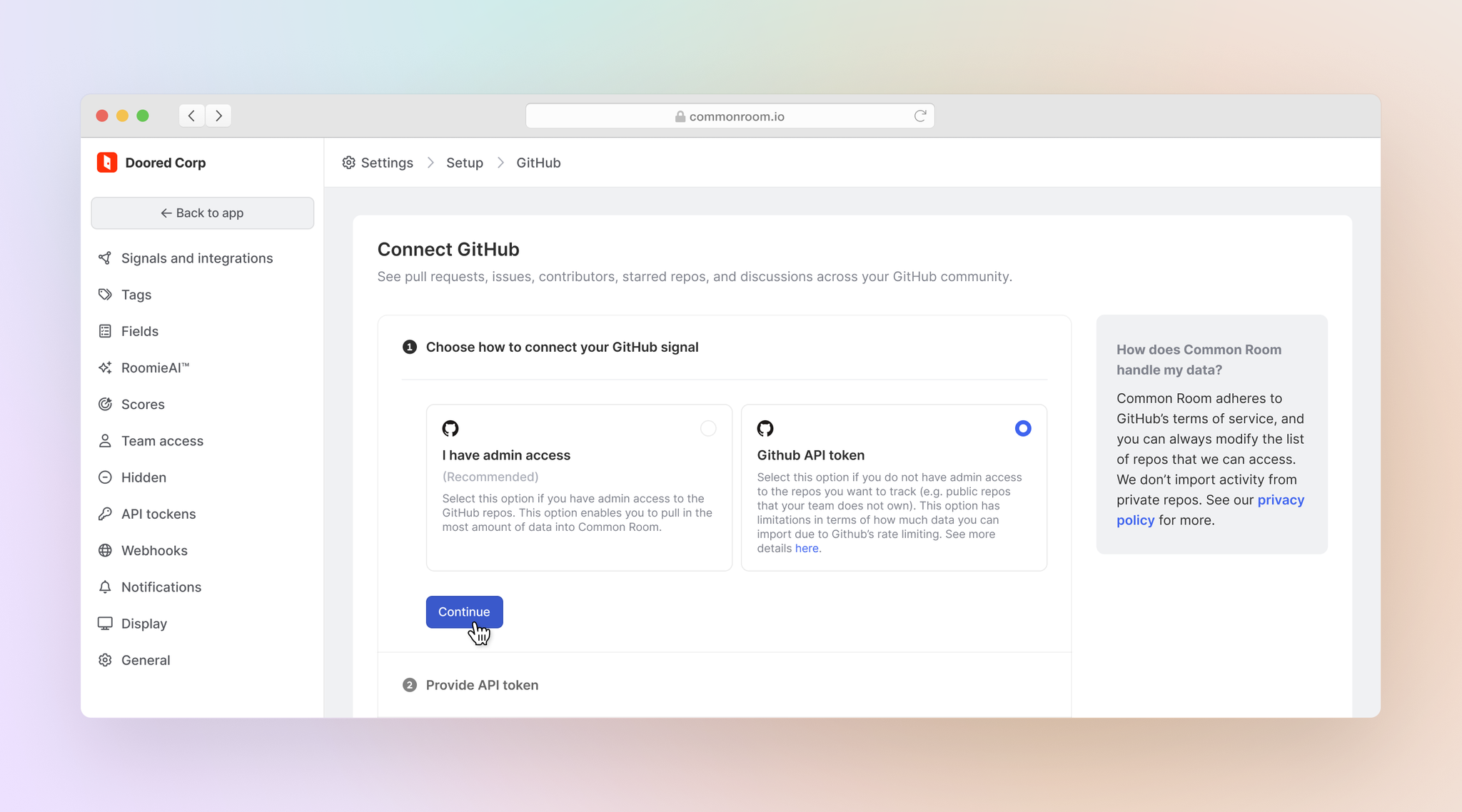
You’ll be asked to create a new personal access token and copy-paste it into Common Room.
Then you can select which repositories you want to connect and sync repo activity using the GitHub API—no coding or tedious integration work required.
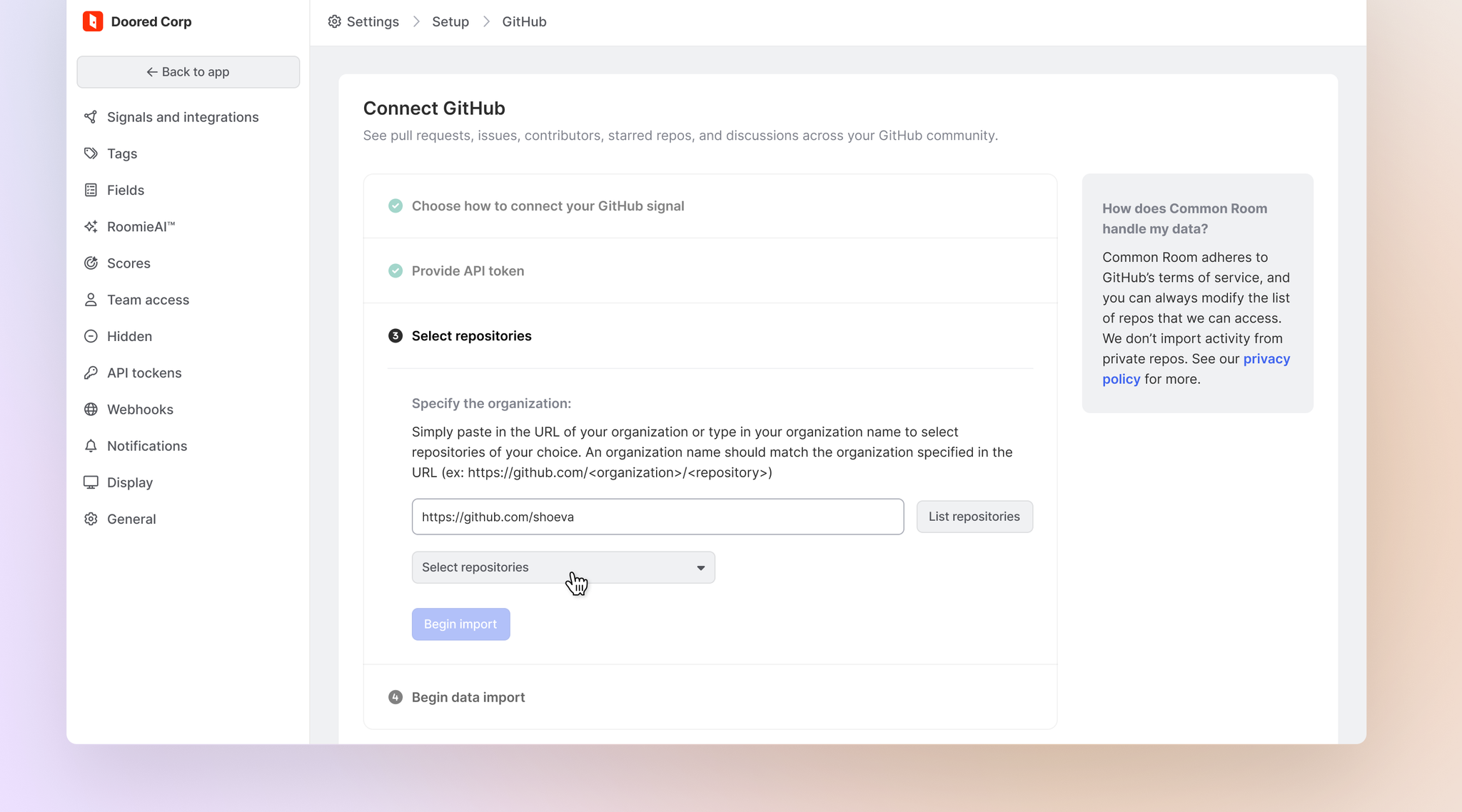
Once this data is pumped into Common Room, we’ll do a six-month lookback of your selected repos and automatically capture new signals going forward.
From here, our AI-powered identity resolution and enrichment engine, Person360™, creates a profile for every person and company detected or adds new repo activity to existing profiles.
Person360 deanonymizes, merges, and enriches signals from GitHub, as well as every other data source connected to Common Room, and syncs them to a unified identity and account.
Names, job titles, work histories, contact information, cross-channel activities, firmographic details—everything you need to paint a complete picture of GitHub users and their organizations—is made available.
Similar to signals from your owned repos, you can filter and tag activities or create real-time alerts and auto-replenishing segments based on activities in unowned repos, allowing you to analyze and take action on GitHub signals however you wish.
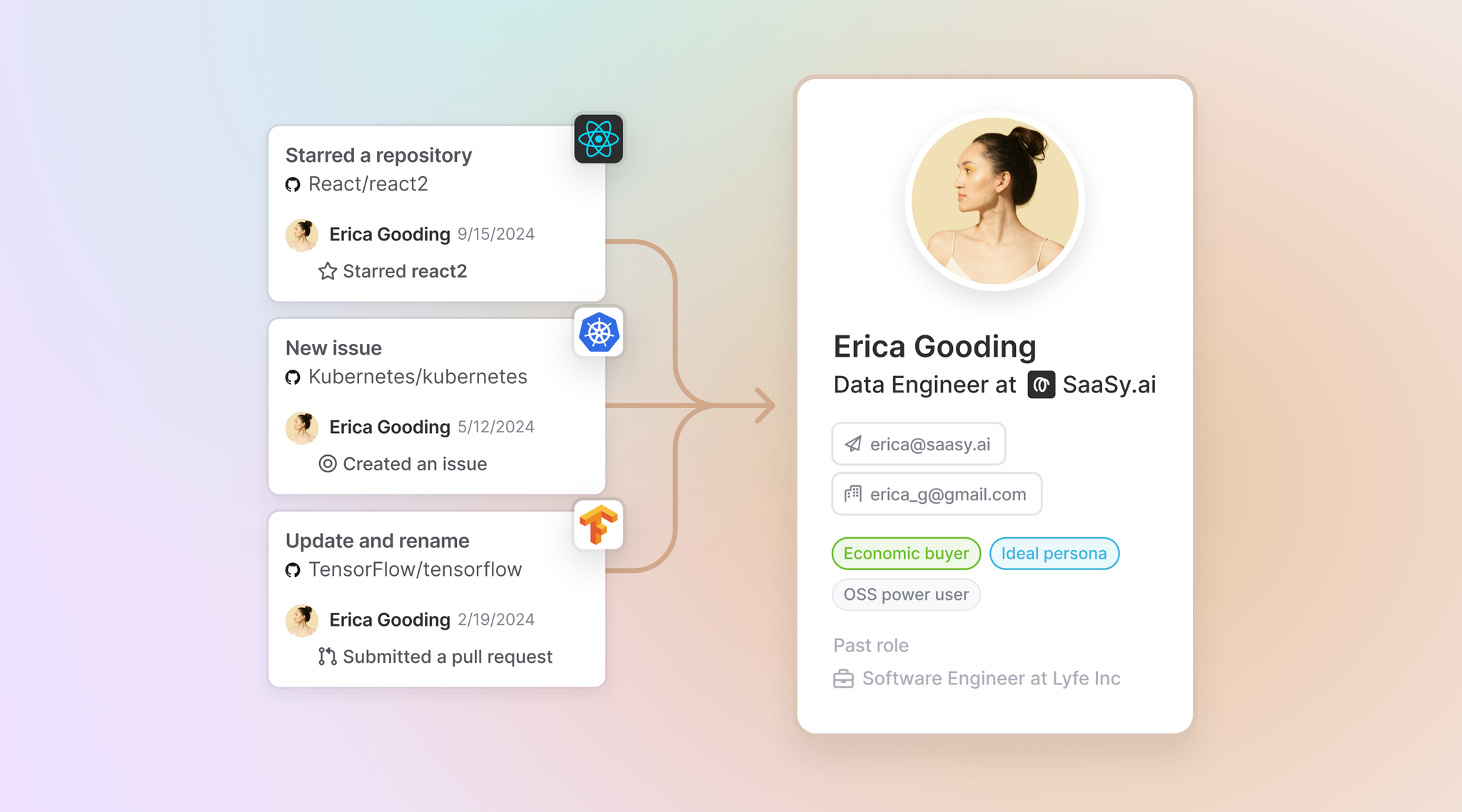
Inform strategy with open-source insights
We’ve seen our customers use GitHub listening across multiple teams and for multiple use cases.
Here are just a few examples:
Account prioritization and research
One of our customers monitors alternative GitHub repos to identify users who may benefit from its offering.
It uses automated alerts to track GitHub issues being reported in real time. If the people reporting these issues (or commenting on them) work at orgs that match its ideal customer profile, team members start digging deeper.
They check to see if multiple users from the same company are active in the repo and review the organization’s existing tech stack to get a better sense of intent and fit. Next they stack rank accounts using signal-based scoring and calculated fields.
Scoring is based on predefined fit criteria (like industry, company size, and annual revenue) and behavioral data (like website visits, social engagements, and community interactions).
Calculated fields highlight which accounts are generating the highest volume of business-relevant signals (in this case, the number of engineers on payroll and the number of engineering jobs currently open at the company).
Once accounts are prioritized, the team uses Prospector to uncover above-the-line stakeholders.
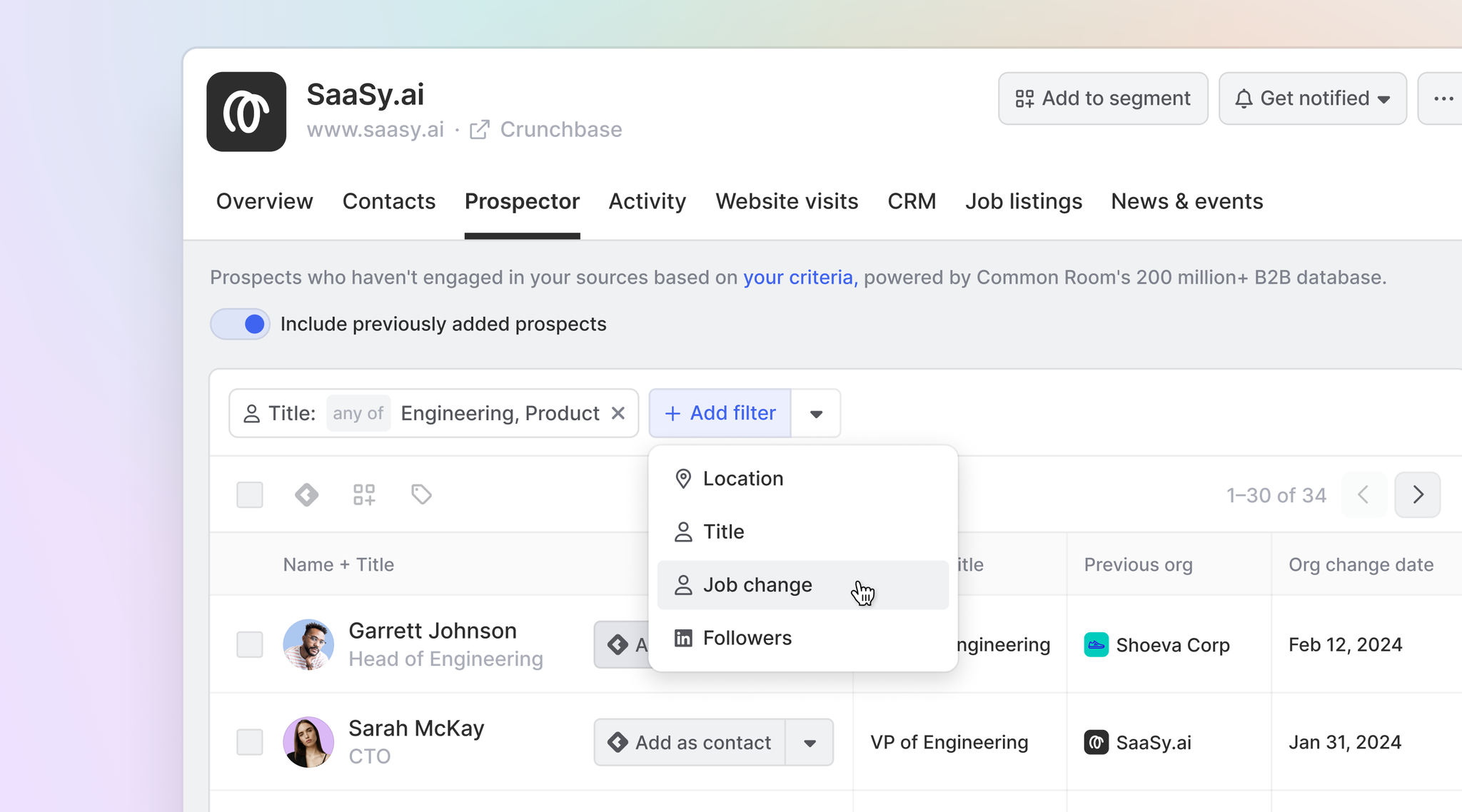
Since frontline devs aren’t always budget holders (and are generally sales-averse), the team taps into Prospector’s constantly refreshed database of more than 200 million B2B contacts and organizations to identify the right economic buyers.
These individuals are segmented for outreach, at which point sales reps start multithreading appropriate stakeholders with value-based messaging based on GitHub activity and granular account details uncovered in Common Room.
Content creation and ABM
One of our customers monitors multiple GitHub repos related to its space to optimize its marketing efforts.
In addition to GitHub activity, it tracks certain keywords across dev-centric channels like X (Twitter), Stack Overflow, and DEV.
It combines this with viral content monitoring, which automatically tags content going viral across business-relevant channels, to keep a pulse on the topics, pain points, and use cases that resonate most with its target audience—all on autopilot.
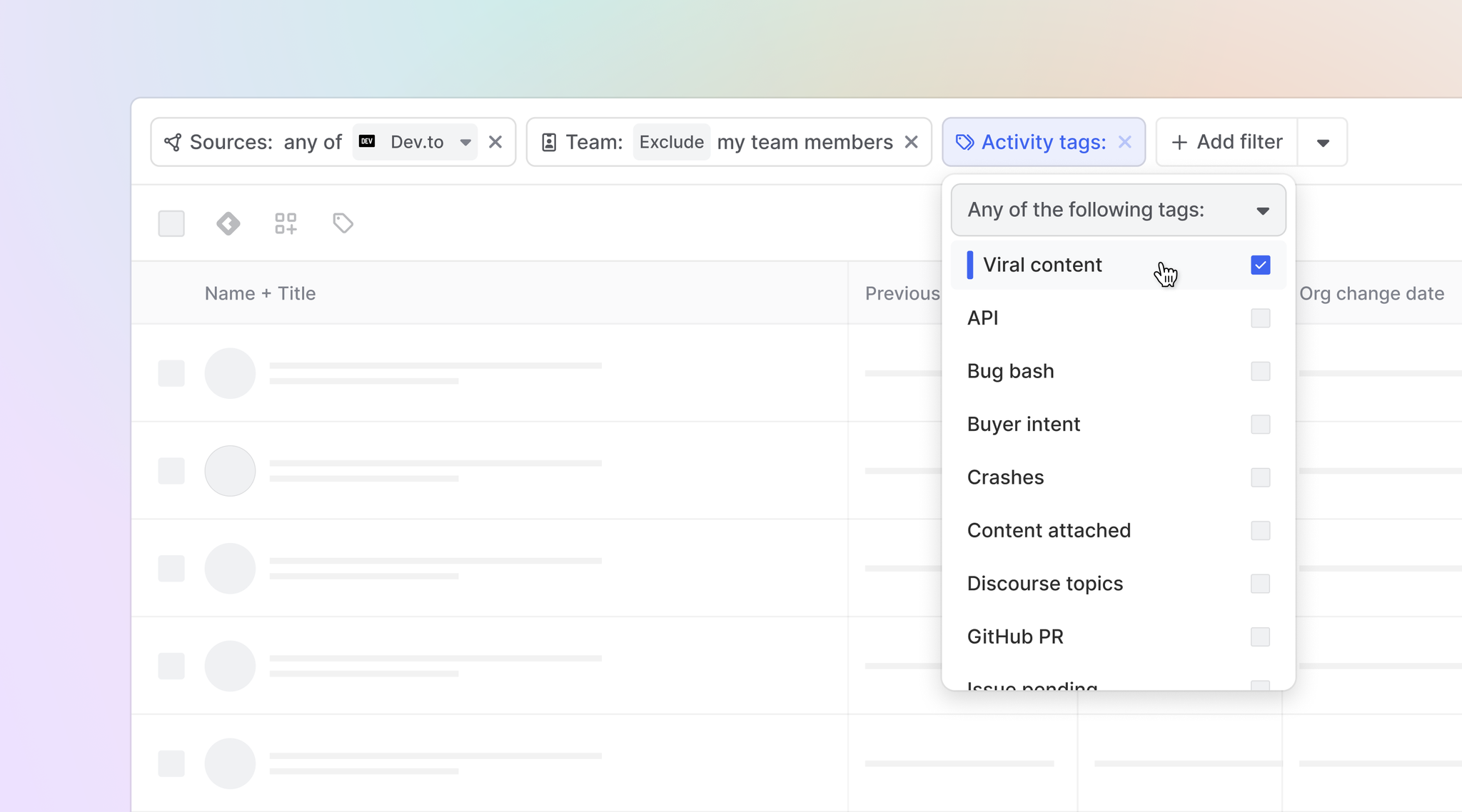
This research powers the company’s content strategy—from docs to blog posts to paid ads. The marketing team can quickly prioritize which assets to create and how based on what resonates most with its ideal customers.
And since it can tie all activity to specific contacts and companies, it’s much easier for team members to craft highly relevant, highly personalized messaging as part of account-based marketing campaigns.
Product development and support
One of our customers monitors alternative GitHub repos to inform its product roadmap.
It uses a combination of auto-categories—machine learning-powered auto-categorization models—and custom workflow automations to track product complaints, praise, feature requests, bugs, questions, and more across GitHub and other popular dev watering holes.
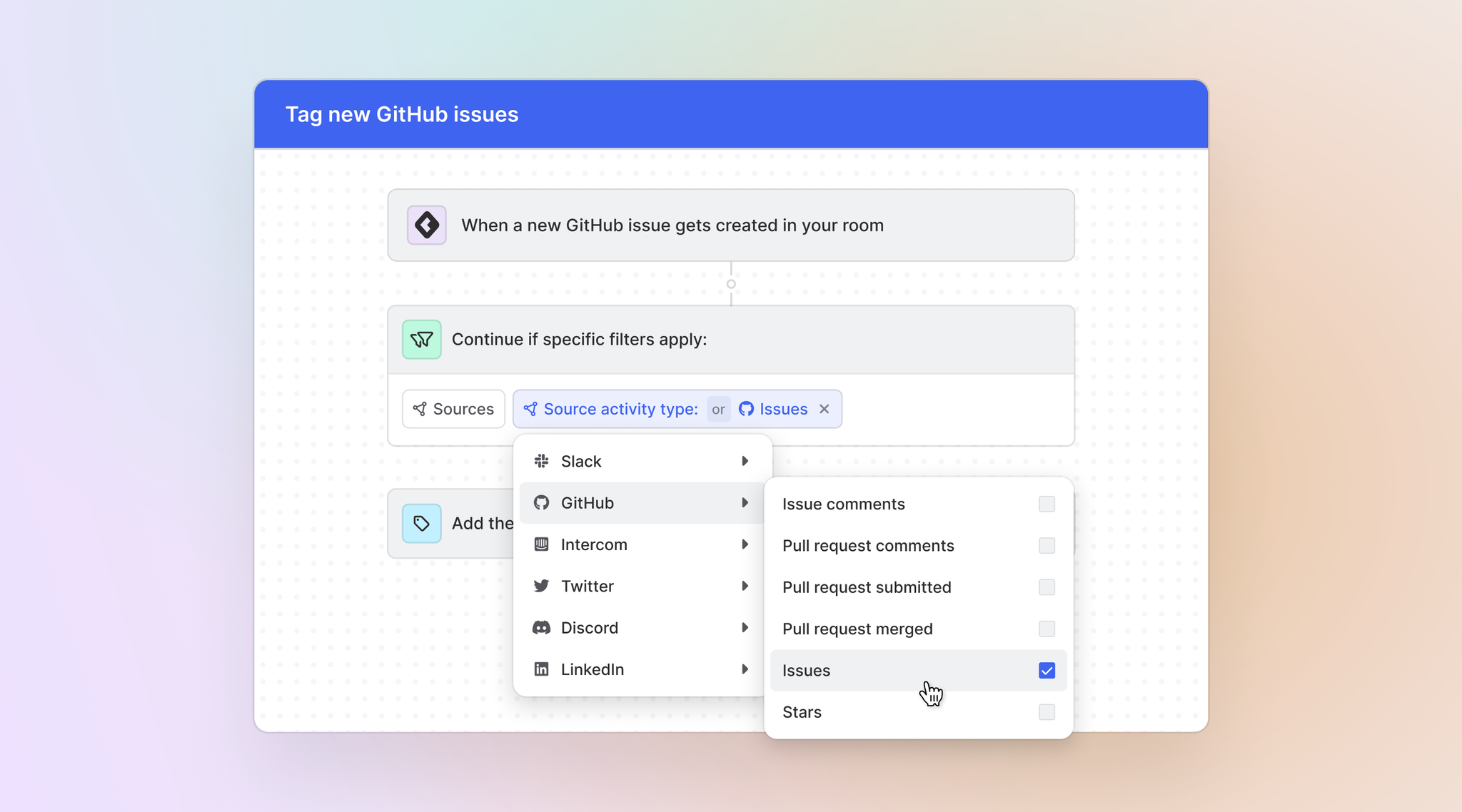
This intel is used to prioritize bug bashing and product updates. The engineering, product, and design teams catalog and rank potential projects based on ideal customers’ wish lists.
At the same time, customer success and developer relations teams use this info to steer clear of friction points with new and existing users.
They can keep a close eye on the most common challenges users face with other softwares, proactively test product workarounds, and beef up educational materials to deliver better customer experiences.
Our goal is to help our customers capture every signal, everywhere—and action on this intelligence—all in one place.
For our COSS customers, GitHub is a big piece of the pie.
With the launch of self-serve GitHub listening, it’s easier than ever to dive into the rich insights GitHub offers.
Your users, champions, and buyers share their challenges, goals, and priorities every single day across GitHub, in your repo and outside of it.
With Common Room’s GitHub listening, you can make sure you never miss a signal.
See every open-source signal with Common Room
Get started for free or get in touch to see how Common Room can help you find, enrich, and take action on every signal fast.
